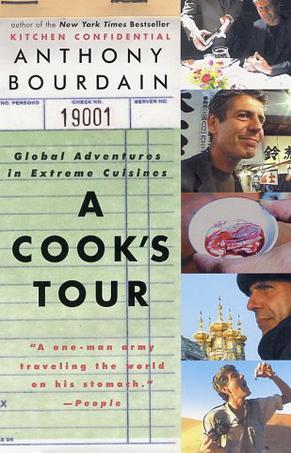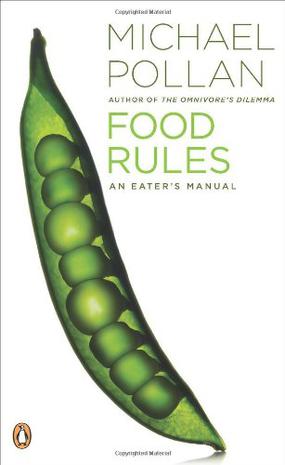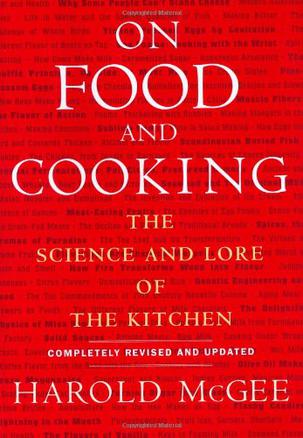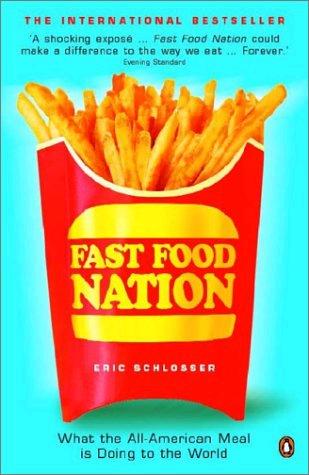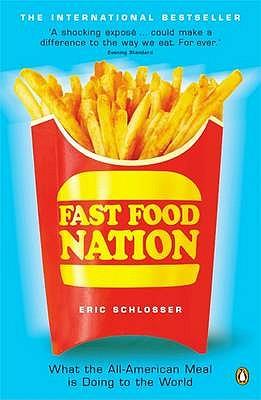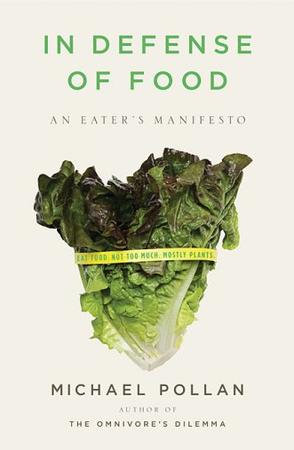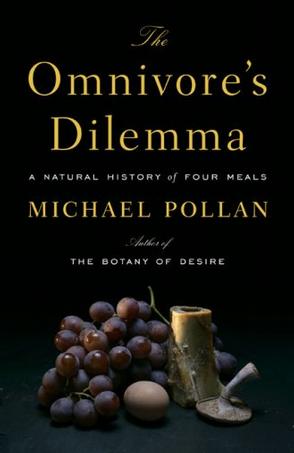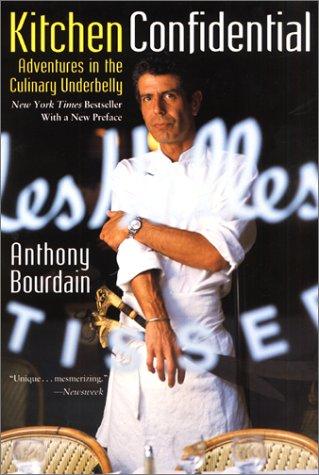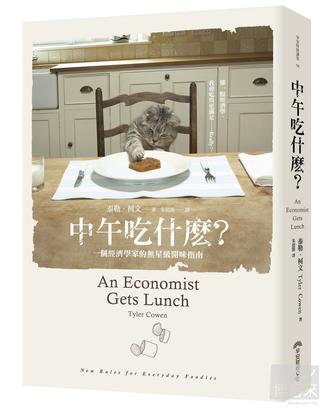欢迎来到相识电子书!
标签:Food
-
The Oxford Handbook of Food History
The historical study of food, culture, and society has become established within the academy based on a generation of high-quality scholarship. Following the foundational work of the French Annales school, the International Committee for the Research into European Food History and the Institut Europeen d'Histoire et des Cultures de l'Alimentation have conducted wide-ranging research, particularly on the changes brought about by culinary modernization. In the United States, the ascendancy of cultural history in the 1990s encouraged young scholars to write dissertations on food-related topics. Despite the existence of at least four major scholarly journals focused on food, the field still lacks a solid foundation of historiographical writing. As a result, innovative early approaches to commodity chains, ethnic identities, and culinary transformation have become repetitive. Meanwhile, scholars are often unaware of relevant literature when it does not directly relate to their particular national and chronological focus. The Oxford Handbook of Food History places existing works in historiographical context, crossing disciplinary, chronological, and geographic boundaries, while also suggesting new routes for future research. The twenty-seven essays in this book are organized into five basic sections: historiography and disciplinary approaches as well as the production, circulation, and consumption of food. Chapters on historiography examine the French Annales school, political history, the cultural turn, labor, and public history. Disciplinary methods that have contributed significantly to the history of food including anthropology, sociology, geography, the emerging Critical Nutrition Studies. The final chapter in this section explores the uses of food in the classroom. The production section encompasses agriculture, pastoralism, and the environment; using cookbooks as historical documents; food and empire; industrial foods; and fast food. Circulation is examined through the lenses of human mobility, chronological frames, and food regimes, along with case studies of the medieval spice trade, the Columbian exchange, and modern culinary tourism. Finally, the consumption section focuses on communities that arise through the sharing of food, including religion, race and ethnicity, national cuisines, and social movements. -
A Cook's Tour
The only thing "gonzo gastronome" and internationally bestselling author Anthony Bourdain loves as much as cooking is traveling. Inspired by the question, "What would be the perfect meal?," Tony sets out on a quest for his culinary holy grail, and in the process turns the notion of "perfection" inside out. From California to Cambodia, A Cooks' Tour chronicles the unpredictable adventures of America's boldest and bravest chef. -
Food Rules
A pocket compendium of food wisdom-from the author of The Omnivore's Dilemma and In Defense of Food Michael Pollan, our nation's most trusted resource for food-related issues, offers this indispensible guide for anyone concerned about health and food. Simple, sensible, and easy to use, Food Rules is a set of memorable rules for eating wisely, many drawn from a variety of ethnic or cultural traditions. Whether at the supermarket or an all-you-can-eat-buffet, this handy, pocket-size resource is the perfect guide for anyone who would like to become more mindful of the food we eat. -
The Family Meal
"The Family Meal" is the first home cooking cookbook by the world's greatest chef, Ferran Adri . It features nearly 100 delicious recipes by Ferran Adri that anyone can prepare, inspired by the dishes eaten every day by the staff at his legendary restaurant El Bulli, awarded World's Best Restaurant five times. The recipes in "The Family Meal" are easy-to-prepare and meant for family dining at home. From "Roast Chicken with Potato Straws, Sea Bass Baked in Salt and Mexican-style Slow-Cooked Pork to White Chocolate Cake" and "Baked Apples with Whipped Cream," there is a wide selection of everyday classics for every night of the week. The cookbook is also the first by such a renowned chef to ensure that the dishes are affordable and the ingredients are widely available at the local supermarket."The Family Meal" is organized into three-course menus, with appetizers, mains and desserts, so you can prepare a well-balanced meal at home - without fuss. Each recipe is shown with numerous step-by-step full-color photographs, and conversions on how you can prepare a meal for a small or large group - for 2, 6, 20 or 75 people.This is the cookbook by Ferran Adria everyone has been waiting for, it is sure to be one of the most talked about and popular cookbooks of the season. -
On Food and Cooking
Harold McGee's On Food and Cooking is a kitchen classic. Hailed by Time magazine as "a minor masterpiece" when it first appeared in 1984, On Food and Cooking is the bible to which food lovers and professional chefs worldwide turn for an understanding of where our foods come from, what exactly they're made of, and how cooking transforms them into something new and delicious. Now, for its twentieth anniversary, Harold McGee has prepared a new, fully revised and updated edition of On Food and Cooking. He has rewritten the text almost completely, expanded it by two-thirds, and commissioned more than 100 new illustrations. As compulsively readable and engaging as ever, the new On Food and Cooking provides countless eye-opening insights into food, its preparation, and its enjoyment. On Food and Cooking pioneered the translation of technical food science into cook-friendly kitchen science and helped give birth to the inventive culinary movement known as "molecular gastronomy." Though other books have now been written about kitchen science, On Food and Cooking remains unmatched in the accuracy, clarity, and thoroughness of its explanations, and the intriguing way in which it blends science with the historical evolution of foods and cooking techniques. Among the major themes addressed throughout this new edition are: Traditional and modern methods of food production and their influences on food quality The great diversity of methods by which people in different places and times have prepared the same ingredients Tips for selecting the best ingredients and preparing them successfully The particular substances that give foods their flavors and that give us pleasure Our evolving knowledge of the health benefits and risks of foods On Food and Cooking is an invaluable and monumental compendium of basic information about ingredients, cooking methods, and the pleasures of eating. It will delight and fascinate anyone who has ever cooked, savored, or wondered about food. -
Fast Food Nation
The story of fast food is to a large extent the story of post-war America. In a perverse way, it is also the story of Britain since the deregulation of our food and labour markets in the early 1980s. Schossler's account takes in the whole of this prototypically global industry, from its origins in the hysterical competition of the southern Californian diners to the modern saturation of urban and suburban locations, from the revolutions in cattle raising and slaughtering, to the employment practices of the industry leaders. -
Fast Food Nation
CHEYENNE MOUNTAIN SITS on the eastern slope of Colorado’s Front Range, rising steeply from the prairie and overlooking the city of Colorado Springs. From a distance, the mountain appears beautiful and serene, dotted with rocky outcroppings, scrub oak, and ponderosa pine. It looks like the backdrop of an old Hollywood western, just another gorgeous Rocky Mountain vista. And yet Cheyenne Mountain is hardly pristine. One of the nation’s most important military installations lies deep within it, housing units of the North American Aerospace Command, the Air Force Space Command, and the United States Space Command. During the mid-1950s, high-level officials at the Pentagon worried that America’s air defenses had become vulnerable to sabotage and attack. Cheyenne Mountain was chosen as the site for a top-secret, underground combat operations center. The mountain was hollowed out, and fifteen buildings, most of them three stories high, were erected amid a maze of tunnels and passageways extending for miles. The four-and-a-half-acre underground complex was designed to survive a direct hit by an atomic bomb. Now officially called the Cheyenne Mountain Air Force Station, the facility is entered through steel blast doors that are three feet thick and weigh twenty-five tons each; they automatically swing shut in less than twenty seconds. The base is closed to the public, and a heavily armed quick response team guards against intruders. Pressurized air within the complex prevents contamination by radioactive fallout and biological weapons. The buildings are mounted on gigantic steel springs to ride out an earthquake or the blast wave of a thermonuclear strike. The hallways and staircases are painted slate gray, the ceilings are low, and there are combination locks on many of the doors. A narrow escape tunnel, entered through a metal hatch, twists and turns its way out of the mountain through solid rock. The place feels like the set of an early James Bond movie, with men in jumpsuits driving little electric vans from one brightly lit cavern to another. Fifteen hundred people work inside the mountain, maintaining the facility and collecting information from a worldwide network of radars, spy satellites, ground-based sensors, airplanes, and blimps. The Cheyenne Mountain Operations Center tracks every manmade object that enters North American airspace or that orbits the earth. It is the heart of the nation’s early warning system. It can detect the firing of a long-range missile, anywhere in the world, before that missile has left the launch pad. This futuristic military base inside a mountain has the capability to be self-sustaining for at least one month. Its generators can produce enough electricity to power a city the size of Tampa, Florida. Its underground reservoirs hold millions of gallons of water; workers sometimes traverse them in rowboats. The complex has its own underground fitness center, a medical clinic, a dentist’s office, a barbershop, a chapel, and a cafeteria. When the men and women stationed at Cheyenne Mountain get tired of the food in the cafeteria, they often send somebody over to the Burger King at Fort Carson, a nearby army base. Or they call Domino’s. Almost every night, a Domino’s deliveryman winds his way up the lonely Cheyenne Mountain Road, past the ominous DEADLY FORCE AUTHORIZED signs, past the security checkpoint at the entrance of the base, driving toward the heavily guarded North Portal, tucked behind chain link and barbed wire. Near the spot where the road heads straight into the mountainside, the delivery man drops off his pizzas and collects his tip. And should Armageddon come, should a foreign enemy someday shower the United States with nuclear warheads, laying waste to the whole continent, entombed within Cheyenne Mountain, along with the high-tech marvels, the pale blue jumpsuits, comic books, and Bibles, future archeologists may find other clues to the nature of our civilization — Big King wrappers, hardened crusts of Cheesy Bread, Barbeque Wing bones, and the red, white, and blue of a Domino’s pizza box. OVER THE LAST THREE DECADES, fast food has infiltrated every nook and cranny of American society. An industry that began with a handful of modest hot dog and hamburger stands in southern California has spread to every corner of the nation, selling a broad range of foods wherever paying customers may be found. Fast food is now served at restaurants and drive-throughs, at stadiums, airports, zoos, high schools, elementary schools, and universities, on cruise ships, trains, and airplanes, at K-Marts, Wal-Marts, gas stations, and even at hospital cafeterias. In 1970, Americaans spent about $6 billion on fast food; in 2000, they spent more than $110 billion. Americans now spend more money on fast food than on higher eeeeeducation, personal computers, computer software, or new cars. They spend more on fast food than on movies, books, magazines, newspapers, videos, and recorded music — combined. Pull open the glass door, feel the rush of cool air, walk in, get on line, study the backlit color photographs above the counter, place your order, hand over a few dollars, watch teenagers in uniforms pushing various buttons, and moments later take hold of a plastic tray full of food wrapped in colored paper and cardboard. The whole experience of buying fast food has become so routine, so thoroughly unexceptional and mundane, that it is now taken for granted, like brushing your teeth or stopping for a red light. It has become a social custom as American as a small, rectangular, hand- held, frozen, and reheated apple pie. This is a book about fast food, the values it embodies, and the world it has made. Fast food has proven to be a revolutionary force in American life; I am interested in it both as a commodity and as a metaphor. What people eat (or don’t eat) has always been determined by a complex interplay of social, economic, and technological forces. The early Roman Republic was fed by its citizen- farmers; the Roman Empire, by its slaves. A nation’s diet can be more revealing than its art or literature. On any given day in the United States about one-quarter of the adult population visits a fast food restaurant. During a relatively brief period of time, the fast food industry has helped to transform not only the American diet, but also our landscape, economy, workforce, and popular culture. Fast food and its consequences have become inescapable, regardless of whether you eat it twice a day, try to avoid it, or have never taken a single bite. The extraordinary growth of the fast food industry has been driven by fundamental changes in American society. Adjusted for inflation, the hourly wage of the average U.S. worker peaked in 1973 and then steadily declined for the next twenty-five years. During that period, women entered the workforce in record numbers, often motivated less by a feminist perspective than by a need to pay the bills. In 1975, about one-third of American mothers with young children worked outside the home; today almost two-thirds of such mothers are employed. As the sociologists Cameron Lynne Macdonald and Carmen Sirianni have noted, the entry of so many women into the workforce has greatly increased demand for the types of services that housewives traditionally perform: cooking, cleaning, and child care. A generation ago, three-quarters of the money used to buy food in the United States was spent to prepare meals at home. Today about half of the money used to buy food is spent at restaurants — mainly at fast food restaurants. The McDonald’s Corporation has become a powerful symbol of America’s service economy, which is now responsible for 90 percent of the country’s new jobs. In 1968, McDonald’s operated about one thousand restaurants. Today it has about twenty-eight thousand restaurants worldwide and opens almost two thousand new ones each year. An estimated one out of every eight workers in the United States has at some point been employed by McDonald’s. The company annually hires about one million people, more than any other American organization, public or private. McDonald’s is the nation’s largest purchaser of beef, pork, and potatoes — and the second largest purchaser of chicken. The McDonald’s Corporation is the largest owner of retail property in the world. Indeed, the company earns the majority of its profits not from selling food but from collecting rent. McDonald’s spends more money on advertising and marketing than any other brand. As a result it has replaced Coca-Cola as the world’s most famous brand. McDonald’s operates more playgrounds than any other private entity in the United States. It is one of the nation’s largest distributors of toys. A survey of American schoolchildren found that 96 percent could identify Ronald McDonald. The only fictional character with a higher degree of recognition was Santa Claus. The impact of McDonald’s on the way we live today is hard to overstate. The Golden Arches are now more widely recognized than the Christian cross. In the early 1970s, the farm activist Jim Hightower warned of “the McDonaldization of America.” He viewed the emerging fast food industry as a threat to independent businesses, as a step toward a food economy dominated by giant corporations, and as a homogenizing influence on American life. In Eat Your Heart Out (1975), he argued that “bigger is not better.” Much of what Hightower feared has come to pass. The centralized purchasing decisions of the large restaurant chains and their demand for standardized products have given a handful of corporations an unprecedented degree of power over the nation’s food supply. Moreover, the tremendous success of the fast food industry has encouraged other industries to adopt similar business methods. The basic thinking behind fast food has become the operating system of today’s retail economy, wiping out small businesses, obliterating regional differences, and spreading identical stores throughout the country like a self-replicating code. America’s main streets and malls now boast the same Pizza Huts and Taco Bells, Gaps and Banana Republics, Starbucks and Jiffy- Lubes, Foot Lockers, Snip N’ Clips, Sunglass Huts, and Hobbytown USAs. Almost every facet of American life has now been franchised or chained. From the maternity ward at a Columbia/HCA hospital to an embalming room owned by Service Corporation International — “the world’s largest provider of death care services,” based in Houston, Texas, which since 1968 has grown to include 3,823 funeral homes, 523 cemeteries, and 198 crematoriums, and which today handles the final remains of one out of every nine Americans — a person can now go from the cradle to the grave without spending a nickel at an independently owned business. The key to a successful franchise, according to many texts on the subject, can be expressed in one word: “uniformity.” Franchises and chain stores strive to offer exactly the same product or service at numerous locations. Customers are drawn to familiar brands by an instinct to avoid the unknown. A brand offers a feeling of reassurance when its products are always and everywhere the same. “We have found out . . . that we cannot trust some people who are nonconformists,” declared Ray Kroc, one of the founders of McDonald’s, angered by some of his franchisees. “We will make conformists out of them in a hurry . . . The organization cannot trust the individual; the individual must trust the organization.” One of the ironies of America’s fast food industry is that a business so dedicated to conformity was founded by iconoclasts and self-made men, by entrepreneurs willing to defy conventional opinion. Few of the people who built fast food empires ever attended college, let alone business school. They worked hard, took risks, and followed their own paths. In many respects, the fast food industry embodies the best and the worst of American capitalism at the start of the twenty-first century — its constant stream of new products and innovations, its widening gulf between rich and poor. The industrialization of the restaurant kitchen has enabled the fast food chains to rely upon a low-paid and unskilled workforce. While a handful of workers manage to rise up the corporate ladder, the vast majority lack full-time employment, receive no benefits, learn few skills, exercise little control over their workplace, quit after a few months, and float from job to job. The restaurant industry is now America’s largest private employer, and it pays some of the lowest wages. During the economic boom of the 1990s, when many American workers enjoyed their first pay raises in a generation, the real value of wages in the restaurant industry continued to fall. The roughly 3.5 million fast food workers are by far the largest group of minimum wage earners in the United States. The only Americans who consistently earn a lower hourly wage are migrant farm workers. A hamburger and french fries became the quintessential American meal in the 1950s, thanks to the promotional efforts of the fast food chains. The typical American now consumes approximately three hamburgers and four orders of french fries every week. But the steady barrage of fast food ads, full of thick juicy burgers and long golden fries, rarely mentions where these foods come from nowadays or what ingredients they contain. The birth of the fast food industry coincided with Eisenhower-era glorifications of technology, with optimistic slogans like “Better Living through Chemistry” and “Our Friend the Atom.” The sort of technological wizardry that Walt Disney promoted on television and at Disneyland eventually reached its fulfillment in the kitchens of fast food restaurants. Indeed, the corporate culture of McDonald’s seems inextricably linked to that of the Disney empire, sharing a reverence for sleek machinery, electronics, and automation. The leading fast food chains still embrace a boundless faith in science — and as a result have changed not just what Americans eat, but also how their food is made. The current methods for preparing fast food are less likely to be found in cookbooks than in trade journals such as Food Technologist and Food Engineering. Aside from the salad greens and tomatoes, most fast food is delivered to the restaurant already frozen, canned, dehydrated, or freeze-dried. A fast food kitchen is merely the final stage in a vast and highly complex system of mass production. Foods that may look familiar have in fact been completely reformulated. What we eat has changed more in the last forty years than in the previous forty thousand. Like Cheyenne Mountain, today’s fast food conceals remarkable technological advances behind an ordinary-looking façade. Much of the taste and aroma of American fast food, for example, is now manufactured at a series of large chemical plants off the New Jersey Turnpike. In the fast food restaurants of Colorado Springs, behind the counters, amid the plastic seats, in the changing landscape outside the window, you can see all the virtues and destructiveness of our fast food nation. I chose Colorado Springs as a focal point for this book because the changes that have recently swept through the city are emblematic of those that fast food — and the fast food mentality — have encouraged throughout the United States. Countless other suburban communities, in every part of the country, could have been used to illustrate the same points. The extraordinary growth of Colorado Springs neatly parallels that of the fast food industry: during the last few decades, the city’s population has more than doubled. Subdivisions, shopping malls, and chain restaurants are appearing in the foothills of Cheyenne Mountain and the plains rolling to the east. The Rocky Mountain region as a whole has the fastest-growing economy in the United States, mixing high-tech and service industries in a way that may define America’s workforce for years to come. And new restaurants are opening there at a faster pace than anywhere else in the nation. Fast food is now so commonplace that it has acquired an air of inevitability, as though it were somehow unavoidable, a fact of modern life. And yet the dominance of the fast food giants was no more preordained than the march of colonial split-levels, golf courses, and man-made lakes across the deserts of the American West. The political philosophy that now prevails in so much of the West — with its demand for lower taxes, smaller government, an unbridled free market — stands in total contradiction to the region’s true economic underpinnings. No other region of the United States has been so dependent on government subsidies for so long, from the nineteenth- century construction of its railroads to the twentieth-century financing of its military bases and dams. One historian has described the federal government’s 1950s highway-building binge as a case study in “interstate socialism” — a phrase that aptly describes how the West was really won. The fast food industry took root alongside that interstate highway system, as a new form of restaurant sprang up beside the new off-ramps. Moreover, the extraordinary growth of this industry over the past quarter-century did not occur in a political vacuum. It took place during a period when the inflation-adjusted value of the minimum wage declined by about 40 percent, when sophisticated mass marketing techniques were for the first time directed at small children, and when federal agencies created to protect workers and consumers too often behaved like branch offices of the companies that were supposed to be regulated. Ever since the administration of President Richard Nixon, the fast food industry has worked closely with its allies in Congress and the White House to oppose new worker safety, food safety, and minimum wage laws. While publicly espousing support for the free market, the fast food chains have quietly pursued and greatly benefited from a wide variety of government subsidies. Far from being inevitable, America’s fast food industry in its present form is the logical outcome of certain political and economic choices. In the potato fields and processing plants of Idaho, in the ranchlands east of Colorado Springs, in the feedlots and slaughterhouses of the High Plains, you can see the effects of fast food on the nation’s rural life, its environment, its workers, and its health. The fast food chains now stand atop a huge food- industrial complex that has gained control of American agriculture. During the 1980s, large multinationals — such as Cargill, ConAgra, and IBP — were allowed to dominate one commodity market after another. Farmers and cattle ranchers are losing their independence, essentially becoming hired hands for the agribusiness giants or being forced off the land. Family farms are now being replaced by gigantic corporate farms with absentee owners. Rural communities are losing their middle class and becoming socially stratified, divided between a small, wealthy elite and large numbers of the working poor. Small towns that seemingly belong in a Norman Rockwell painting are being turned into rural ghettos. The hardy, independent farmers whom Thomas Jefferson considered the bedrock of American democracy are a truly vanishing breed. The United States now has more prison inmates than full-time farmers. The fast food chains’ vast purchasing power and their demand for a uniform product have encouraged fundamental changes in how cattle are raised, slaughtered, and processed into ground beef. These changes have made meatpacking — once a highly skilled, highly paid occupation — into the most dangerous job in the United States, performed by armies of poor, transient immigrants whose injuries often go unrecorded and uncompensated. And the same meat industry practices that endanger these workers have facilitated the introduction of deadly pathogens, such as E. coli 0157:H7, into America’s hamburger meat, a food aggressively marketed to children. Again and again, efforts to prevent the sale of tainted ground beef have been thwarted by meat industry lobbyists and their allies in Congress. The federal government has the legal authority to recall a defective toaster oven or stuffed animal — but still lacks the power to recall tons of contaminated, potentially lethal meat. I do not mean to suggest that fast food is solely responsible for every social problem now haunting the United States. In some cases (such as the malling and sprawling of the West) the fast food industry has been a catalyst and a symptom of larger economic trends. In other cases (such as the rise of franchising and the spread of obesity) fast food has played a more central role. By tracing the diverse influences of fast food I hope to shed light not only on the workings of an important industry, but also on a distinctively American way of viewing the world. Elitists have always looked down at fast food, criticizing how it tastes and regarding it as another tacky manifestation of American popular culture. The aesthetics of fast food are of much less concern to me than its impact upon the lives of ordinary Americans, both as workers and consumers. Most of all, I am concerned about its impact on the nation’s children. Fast food is heavily marketed to children and prepared by people who are barely older than children. This is an industry that both feeds and feeds off the young. During the two years spent researching this book, I ate an enormous amount of fast food. Most of it tasted pretty good. That is one of the main reasons people buy fast food; it has been carefully designed to taste good. It’s also inexpensive and convenient. But the value meals, two-for-one deals, and free refills of soda give a distorted sense of how much fast food actually costs. The real price never appears on the menu. The sociologist George Ritzer has attacked the fast food industry for celebrating a narrow measure of efficiency over every other human value, calling the triumph of McDonald’s “the irrationality of rationality.” Others consider the fast food industry proof of the nation’s great economic vitality, a beloved American institution that appeals overseas to millions who admire our way of life. Indeed, the values, the culture, and the industrial arrangements of our fast food nation are now being exported to the rest of the world. Fast food has joined Hollywood movies, blue jeans, and pop music as one of America’s most prominent cultural exports. Unlike other commodities, however, fast food isn’t viewed, read, played, or worn. It enters the body and becomes part of the consumer. No other industry offers, both literally and figuratively, so much insight into the nature of mass consumption. Hundreds of millions of people buy fast food every day without giving it much thought, unaware of the subtle and not so subtle ramifications of their purchases. They rarely consider where this food came from, how it was made, what it is doing to the community around them. They just grab their tray off the counter, find a table, take a seat, unwrap the paper, and dig in. The whole experience is transitory and soon forgotten. I’ve written this book out of a belief that people should know what lies behind the shiny, happy surface of every fast food transaction. They should know what really lurks between those sesame-seed buns. As the old saying goes: You are what you eat. -
In Defense of Food
What to eat, what not to eat, and how to think about health: a manifesto for our times "Eat food. Not too much. Mostly plants." These simple words go to the heart of Michael Pollan's In Defense of Food, the well-considered answers he provides to the questions posed in the bestselling The Omnivore's Dilemma. Humans used to know how to eat well, Pollan argues. But the balanced dietary lessons that were once passed down through generations have been confused, complicated, and distorted by food industry marketers, nutritional scientists, and journalists-all of whom have much to gain from our dietary confusion. As a result, we face today a complex culinary landscape dense with bad advice and foods that are not "real." These "edible foodlike substances" are often packaged with labels bearing health claims that are typically false or misleading. Indeed, real food is fast disappearing from the marketplace, to be replaced by "nutrients," and plain old eating by an obsession with nutrition that is, paradoxically, ruining our health, not to mention our meals. Michael Pollan's sensible and decidedly counterintuitive advice is: "Don't eat anything that your great-great grandmother would not recognize as food." Writing In Defense of Food, and affirming the joy of eating, Pollan suggests that if we would pay more for better, well-grown food, but buy less of it, we'll benefit ourselves, our communities, and the environment at large. Taking a clear-eyed look at what science does and does not know about the links between diet and health, he proposes a new way to think about the question of what to eat that is informed by ecology and tradition rather than by the prevailing nutrient-by-nutrient approach. In Defense of Food reminds us that, despite the daunting dietary landscape Americans confront in the modern supermarket, the solutions to the current omnivore's dilemma can be found all around us. In looking toward traditional diets the world over, as well as the foods our families-and regions-historically enjoyed, we can recover a more balanced, reasonable, and pleasurable approach to food. Michael Pollan's bracing and eloquent manifesto shows us how we might start making thoughtful food choices that will enrich our lives and enlarge our sense of what it means to be healthy. -
The Omnivore's Dilemma
The bestselling author of The Botany of Desire explores the ecology of eating to unveil why we consume what we consume in the twenty-first century "What should we have for dinner?" To one degree or another this simple question assails any creature faced with a wide choice of things to eat. Anthropologists call it the omnivore's dilemma. Choosing from among the countless potential foods nature offers, humans have had to learn what is safe, and what isn't-which mushrooms should be avoided, for example, and which berries we can enjoy. Today, as America confronts what can only be described as a national eating disorder, the omnivore's dilemma has returned with an atavistic vengeance. The cornucopia of the modern American supermarket and fast-food outlet has thrown us back on a bewildering landscape where we once again have to worry about which of those tasty-looking morsels might kill us. At the same time we're realizing that our food choices also have profound implications for the health of our environment. The Omnivore's Dilemma is bestselling author Michael Pollan's brilliant and eye-opening exploration of these little-known but vitally important dimensions of eating in America. Pollan has divided The Omnivore's Dilemma into three parts, one for each of the food chains that sustain us: industrialized food, alternative or "organic" food, and food people obtain by dint of their own hunting, gathering, or gardening. Pollan follows each food chain literally from the ground up to the table, emphasizing our dynamic coevolutionary relationship with the species we depend on. He concludes each section by sitting down to a meal--at McDonald's, at home with his family sharing a dinner from Whole Foods, and in a revolutionary "beyond organic" farm in Virginia. For each meal he traces the provenance of everything consumed, revealing the hidden components we unwittingly ingest and explaining how our taste for particular foods reflects our environmental and biological inheritance. We are indeed what we eat-and what we eat remakes the world. A society of voracious and increasingly confused omnivores, we are just beginning to recognize the profound consequences of the simplest everyday food choices, both for ourselves and for the natural world. The Omnivore's Dilemma is a long-overdue book and one that will become known for bringing a completely fresh perspective to a question as ordinary and yet momentous as What shall we have for dinner? -
Kitchen Confidential
When Chef Anthony Bourdain wrote "Don t Eat Before You Read This" in The New Yorker, he spared no one s appetite, revealing what goes on behind the kitchen door. In Kitchen Confidential, he expanded that appetizer into a deliciously funny, delectable shocking banquet that lays out his 25 years of sex, drugs, and haute cuisine.From his first oyster in the Gironde to the kitchen of the Rainbow Room atop Rockefeller Center, from the restaurants of Tokyo to the drug dealers of the East Village, from the mobsters to the rats, Bourdain s brilliantly written, wild-but-true tales make the belly ache with laughter. -
中午吃什麼? 一個經濟學家的無星級開胃指南
這是一本書評家拍案叫絕、造福百萬上班族的日常飲食指南! 他說,正妹太多的餐廳別進去,為什麼? 他說,除非報公帳,否則別吃懷石料理,為什麼? 他說,吃美食最好到巷子裡找,為什麼? 聽重量級暢銷經濟學家泰勒.柯文,教我們打破吃飯魔咒! 美食,誰說一定得貴聳聳?吃好料,誰說一定得心痛地砸大錢? 這本書大力主張:飲食世界需要一種文化,幫助我們擺脫「勢利眼美食家」的偏見,讓人人都無須花更多錢,就能吃到健康、環保、令人讚嘆的美食! 作者用他經濟學家獨到的視角,讓我們明白:只要拋開五星級的迷思,就能讓你我在『無星級』的小攤子、小餐館,享用到物美價廉的好東西! 《中午吃什麼?》會改變你對食物與環境、食物與健康,乃至食物與追求幸福的看法。這本書,將影響你我今天吃什麼的選擇,也關乎人類明天將如何餵飽全世界。 如果你在乎吃,就要在乎食物背後的經濟學…… 柯文的超有趣平價開味指南── ☆平常上班用餐,盡量到巷子裡找「低租美食」! ☆回家下廚,可以搭配外食「偷吃步」! ☆出門旅遊,買一本米其林指南,然後專挑「無星級」的館子! ☆在東京想吃好的日本菜,隨便挑一家餐館進去就對了! ☆想在家下廚? 很好,但不必買一堆鍋子…… -
改变一生的饮食计划
我们吃的食物就如同燃料,它为我们身体机能的正常运转提供了必不可少的能量。如果注入体内的燃料数量和质量得不到保证,那么你的健康状况也就会大打折扣。我们体内的细胞数量多达百万亿,每个细胞每天都需要持续不断的营养供给以达到最佳工作状态。食物会影响到所有这些细胞的状态,进而影响到人生命的各个方面:情绪、精力、对食物的渴望、思考能力、性欲、睡眠、习惯以及整体健康状况。简而言之,健康饮食是开启幸福之门的钥匙。 -
花样甜——不用烤箱的76道快手甜点
《花样甜——不用烤箱的76道缤纷甜点》详细介绍了冰沙、雪酪、冷糕、冰激凌、布丁、果冻、糖果、慕斯、芝士蛋糕、热甜点共十大类76道免烤甜点的制作方法,几乎涵盖一年四季、各种场合适合品尝的甜点类型。精心推敲、反复实践的完美配方,简单清晰的图文解说,让爱吃甜食却没有烤箱、喜欢烘焙却怕麻烦的你也能做出赏心悦目的缤纷甜品。另外,本书创造性地按照制作甜品所使用时间和难易程度来划分章节,避免了以类划分的单一,读者可以根据自身水平和时间来自由选择,真正做到操作无负担,享受手作过程的快乐和满足。 -
一把盐
《一把盐》是一本从美学、哲学、历史、科学、民俗等多角度讨论家庭饮食健康和文化的随笔集,是中国第一本系统论述中国家庭日常饮食的书。文章语句见微知著,妙趣横生,信息量大,于饾饤出不断幽发出对人生的感喟和彻悟。 他在开篇这样写道:“当我看到高汤也不用亲自熬了,鸡腿、牛排可以在美国实验室里培植了,连没有任何天然植物成分的全化学食品都出现了——我决定写一本烧菜只用自然调味料和一把盐、随季节调整食材的家庭美食书......多么希望可以通过自然味道的回归,可以让乡间多为我们留出一块绿色的田地,让阔别已久的传统天然调味品恢复生产,让我们和我们的孩子们不再受到看不见的健康威胁。” 作者认为,现在民众的料理过于注重复杂的调味,往往忽视了食物的产地、种植的过程、天气地理变化也是自然与人为的调味过程。真正的好厨师,不能一味追求惊世骇俗的味道和样式,而是要让菜肴的每一道料,都要突出食物本来味道,而制作这些料理对火候,刀工,包括制作者的心态都有很高要求。 如何通过饮食获得最佳的健康状态?作者以其敏锐的观察力,结合零零散散的知识碎片,倡导个体适应性与饮食之间的合理认知逻辑,并总结出八个字:“知行合一,和谐有度”。
热门标签
下载排行榜
- 1 梦的解析:最佳译本
- 2 李鸿章全传
- 3 淡定的智慧
- 4 心理操控术
- 5 哈佛口才课
- 6 俗世奇人
- 7 日瓦戈医生
- 8 笑死你的逻辑学
- 9 历史老师没教过的历史
- 10 1分钟和陌生人成为朋友


